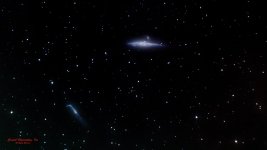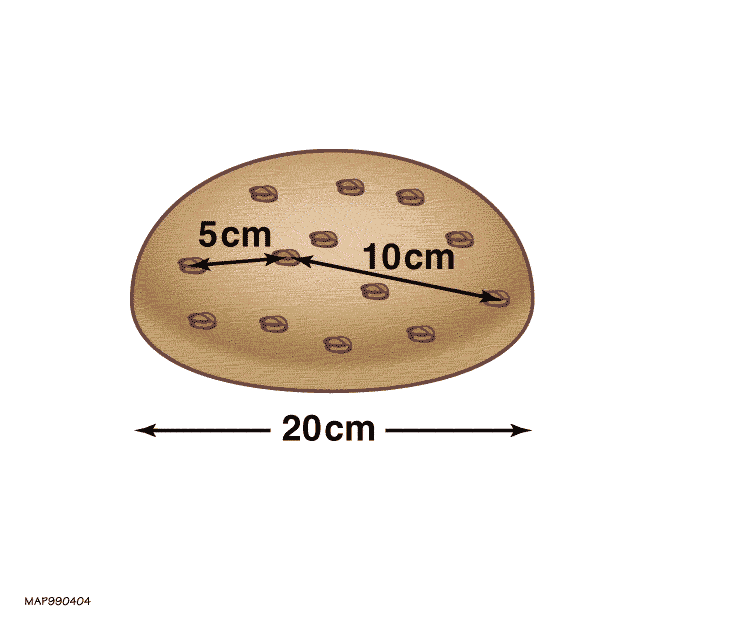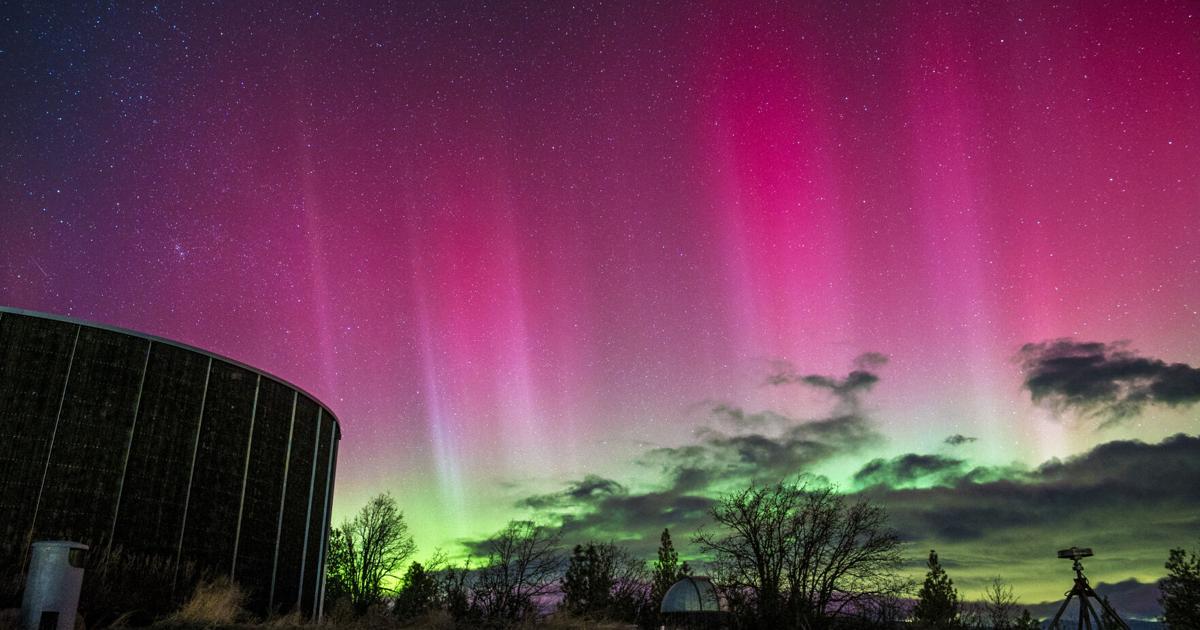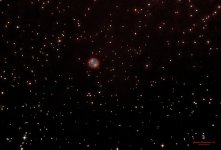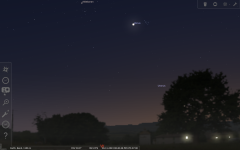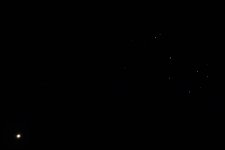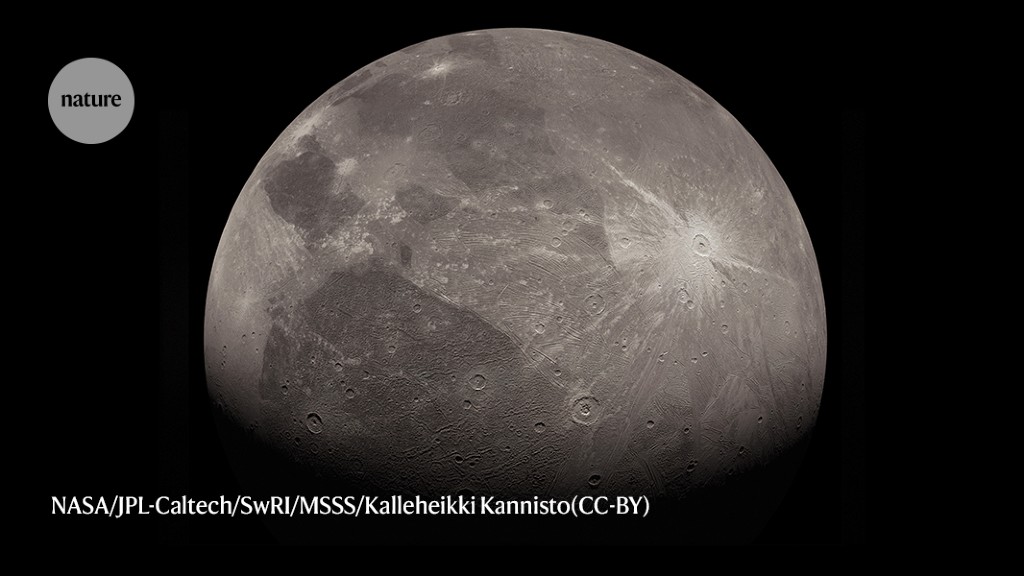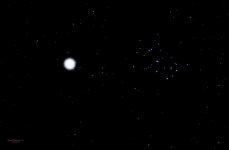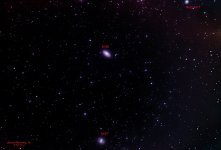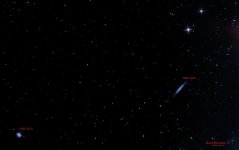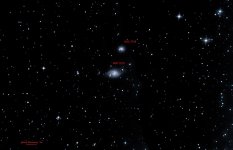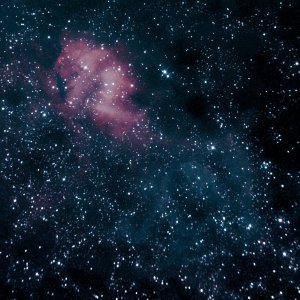M 95 is a barred spiral galaxy in the constellation Leo, only 2/3 of a degree from the spiral galaxy M 96. Both were discovered by Pierre Mechain in 1781 and added by Charles Messier to his catalogue later that same year. The nucleus of M 95 is surrounded by a ring-shaped star forming region of 2000 light years in diameter. The bright inner disc of M 96 is composed of older yellow stars, whereas the outer blue discs are populated by clusters of young hot stars.
M 105, an elliptical galaxy, was also discovered by Pierre Mechain in 1781, but mysteriously was not included by Messier in his catalogue. M 105 was not included in the catalogue until a letter from Machain to the Swiss mathematician Daniel Bernoulli describing the object was found in 1947 by Helen Hogg. The Hubble Space Telescope revealed that M 105 harbors a central super massive black hole of some 50 million solar masses.
M 95, M 96, and M 105: 40 X 240 second light exposures; 40 X 240 second dark exposures; multispectrum broadband filter:
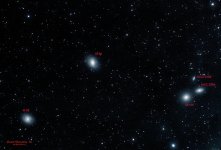
Cheers
M 105, an elliptical galaxy, was also discovered by Pierre Mechain in 1781, but mysteriously was not included by Messier in his catalogue. M 105 was not included in the catalogue until a letter from Machain to the Swiss mathematician Daniel Bernoulli describing the object was found in 1947 by Helen Hogg. The Hubble Space Telescope revealed that M 105 harbors a central super massive black hole of some 50 million solar masses.
M 95, M 96, and M 105: 40 X 240 second light exposures; 40 X 240 second dark exposures; multispectrum broadband filter:

Cheers

